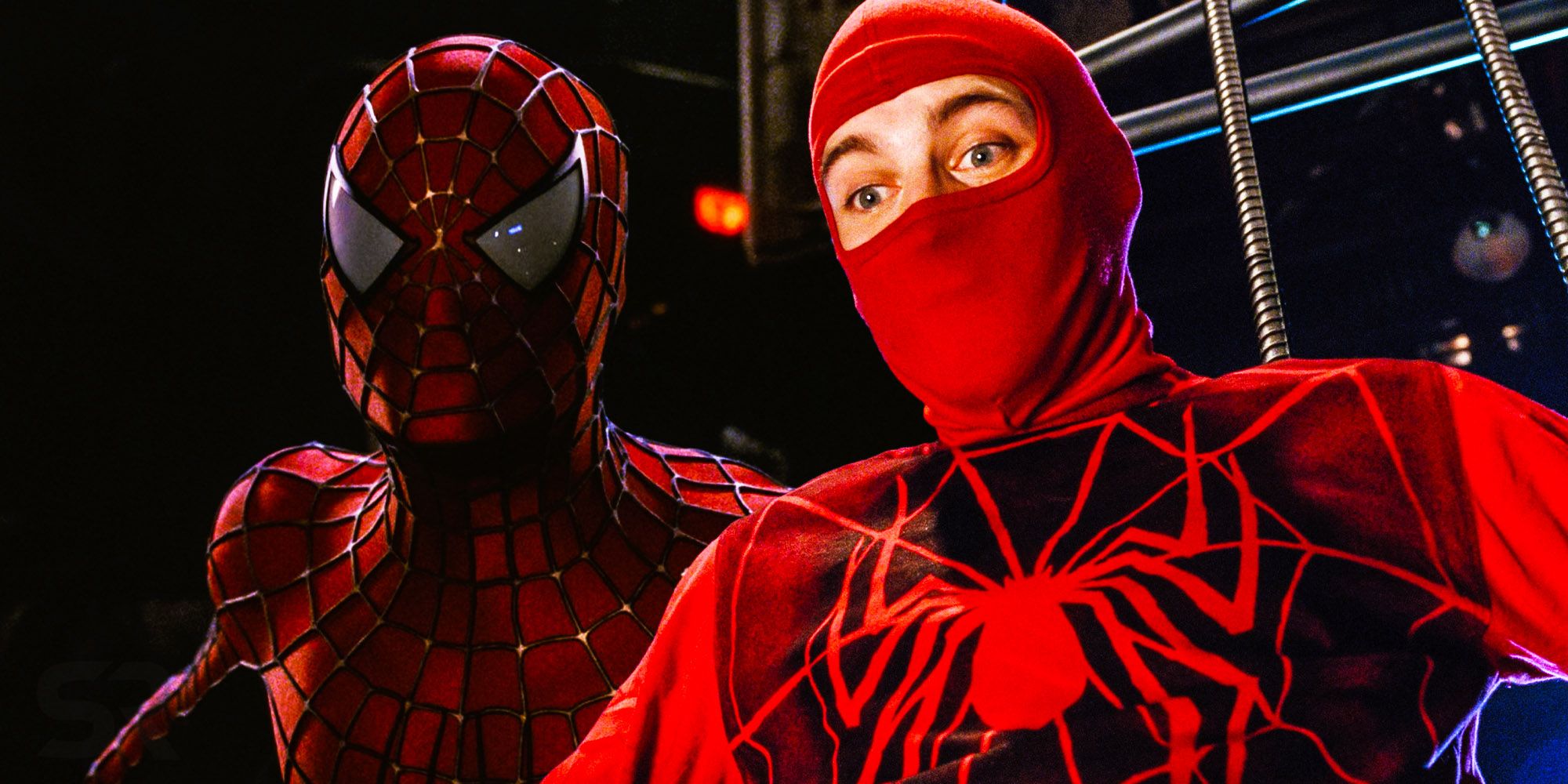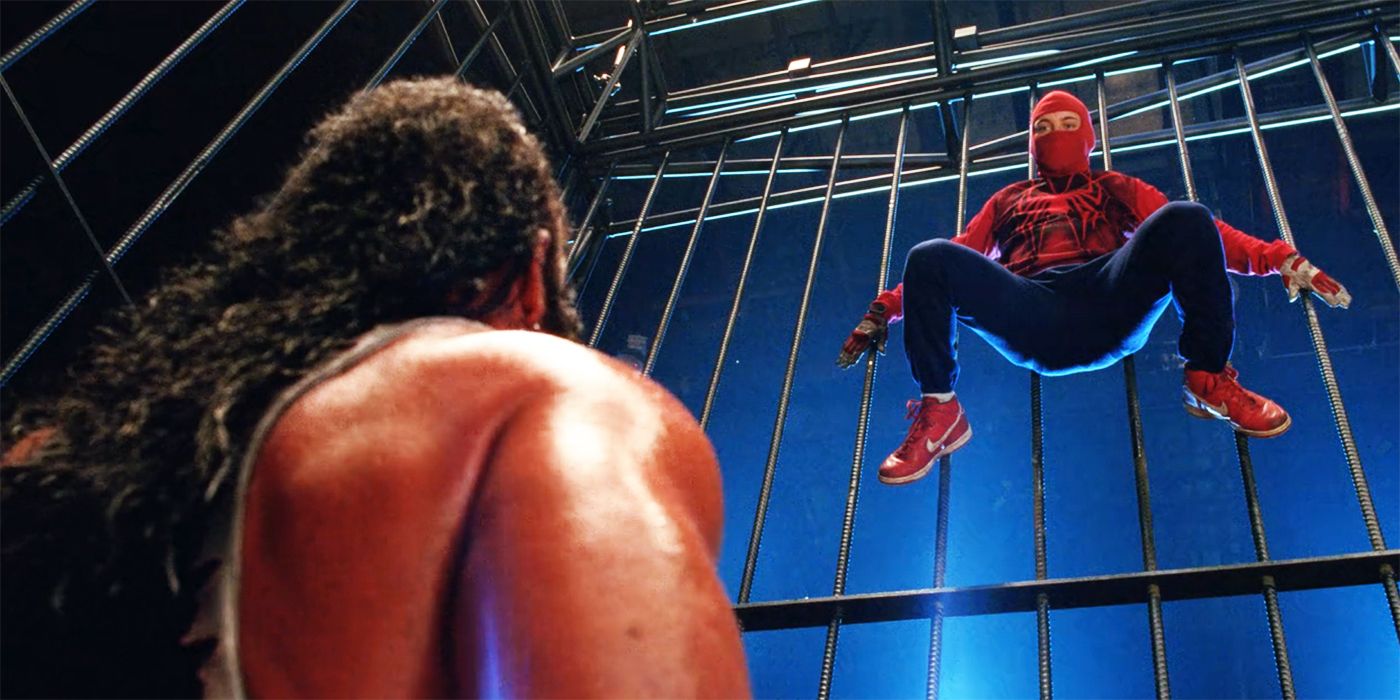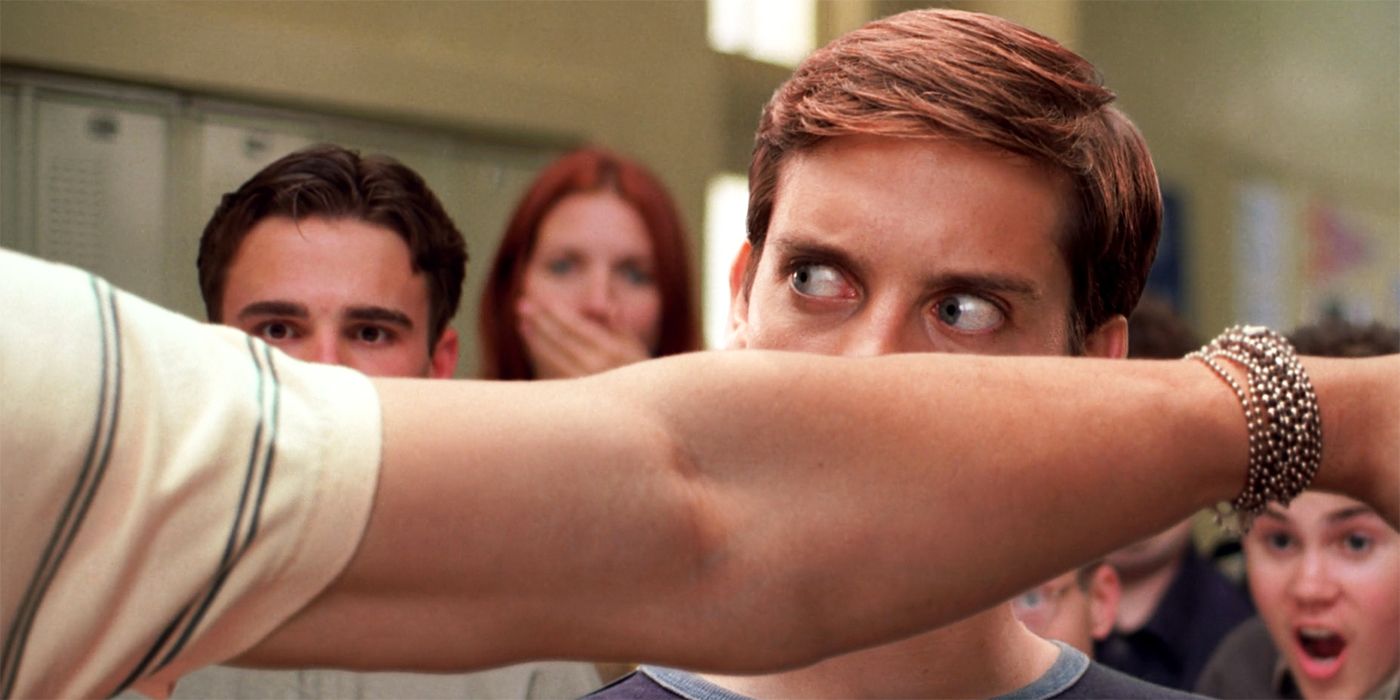Sam Raimi’s Spider-Man trilogy was key in the superhero genre becoming what it is now, but that doesn’t mean it was safe from plot holes, and a theory solves one left by the first movie. Back in 2002, and after a lot of obstacles for many years, Spider-Man finally made the jump to the big screen with Sam Raimi as director and Tobey Maguire playing Peter Parker. Simply titled Spider-Man, the movie explored the origin story of the title hero, from the moment he was bitten by a genetically engineered spider to his full transformation into the “friendly neighborhood Spider-Man” everyone knows so well.
Spider-Man took a look into Peter’s full process to become a hero, beginning with the physical consequences of the spider’s bite, Peter discovering the new powers and abilities he had, and coming up with his superhero persona. Spider-Man also saw Peter's first actions as the web-slinger, which began with a cage fight against a wrestler known as Bonesaw, though that later led to the tragic death of Uncle Ben. Spider-Man’s fight against Bonesaw made way for a plot hole regarding one of Spider-Man’s most famous powers, which a theory solves in a simple way, though it raises more questions about this power.
Theory: Peter Knew He Wasn’t In Danger During His Cage Fight In Spider-Man
As Peter discovered his new powers and abilities, he got accidentally involved in a fight with school bully Flash Thompson (Joe Manganiello). After catching Mary Jane (Kirsten Dunst) at the school cafeteria after she slipped, Peter accidentally shot his webs at a tray on the table in front of him, and when he pulled it, he accidentally hit Flash Thompson in the back of his head. This led to a confrontation between Peter and Flash, during which Peter discovered his Spider-Sense, which allowed him to dodge Flash’s punches and ultimately win the fight. After testing the rest of his abilities, Peter decided to use them in an underground wrestling event to win the money and buy a car to impress Mary Jane. Peter made a suit to hide his identity and was put against Bonesaw, a professional wrestler, in what turned out to be a cage fight, which Peter wasn’t aware of.
Even though the cage fight took Peter by surprise and Bonesaw was a lot stronger than him, Peter’s Spider-Sense didn’t kick in, which has been questioned by fans over the years as Peter was in danger once again. A theory posted on Reddit explains that Peter’s Spider-Sense didn’t kick in because Peter knew these fights are scripted and therefore he wasn’t in real danger, even if there was a risk of injury. Bonesaw was a professional wrestler, so even if he looked like he wanted to break Peter’s spine, he actually had no intention of hurting the young Spider-Man and was instead focused on putting on a good show. Peter was aware of that, and even if he ended up in a cage with Bonesaw, he knew he wasn’t in real danger, but he had to rethink his moves once the cage came down.
How Does Spider-Man’s “Spider-Sense” Really Work?
One of Spider-Man’s best-known powers is his precognitive sixth sense, best known as Spider-Sense. Whenever danger is near, the Spider-Sense kicks in and alerts Spider-Man, which he describes as a buzz inside his skull. This power allows him to detect and react immediately before real danger happens, which is how he was able to win the fight against Flash. The theory, then, would suggest that Spider-Sense can differentiate between situations where Spider-Man could get hurt but not intentionally, like in the cage fight, and when someone really wants to break face, making this superpower a lot more complex. The theory of Peter knowing wrestling is scripted solves the mystery of why his Spider-Sense didn’t kick in during his fight against Bonesaw in Spider-Man, but raises a couple of questions about this ability.



